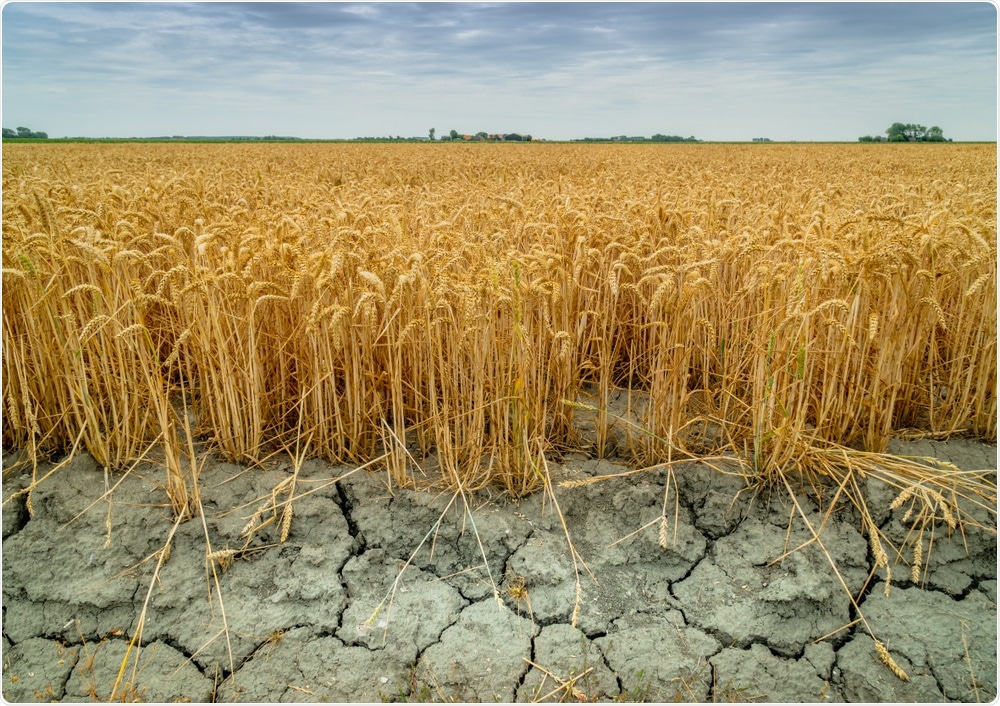Climate change is making droughts a more common occurrence, this is reducing crop yield around the world, adding risk to food security for the coming years.
A team of scientists from the University of Bayreuth and the Leibniz Centre for Agricultural Landscape Research (ZALF) published a paper this month in the journal Scientific Reports that describe how silica could be used to resolve this problem as they have discovered that it can increase the availability of water to crops.

Image Credit: Jasper Suitjen/Shutterstock.com
Increasing the water retention curve
It has long been recognized that increased drought frequency and longer drought periods are a symptom of climate change. This is leading to increasing concern surrounding the issue of food security, as populations rise and space for farming decreases, the demand for food is beginning to approach the capacity of what the world can provide.
Some strategies are already in place to address this, such as those that tackle food waste, however, this may not be enough to ensure food security for the future.
Scientists are therefore looking to make improvements at the other end of the food journey, they are innovating ways to increase crop yields. Currently, increasing droughts are reducing crop yields and ecosystem performance.
When crops do not have access to sufficient rainfall, such as during long drought periods, the level of water stored in the soil drops to the point where plants can no longer access enough hydration and this causes the crop to fail.
The water retention curve refers to the soil’s ability to retain water, soils with a high water retention curve are useful in areas at risk of drought because they help plants gain access to water when rainfall is scarce.
The research team at the University of Bayreuth and ZALF set out to discover a way to increase the water available in the soil to prevent crop failure in times of drought. In achieving this, the team knew that they would be able to address global food security even despite climate change.
Amorphous silica significantly increases water availability
Environmental chemists and soil physicists teamed up to investigate the impact of amorphous silica on how soil absorbs and stores water. This was the first time the substance had ever been investigated in this manner.
The results demonstrated that increasing the amorphous silica available in soil by just 1% has the impact of increasing the volume of water available in the soil by 40% or more. The team explains that this is because gels form out of the amorphous silica molecules which contain vast amounts of water, allowing the roots of plants easy access to this water supply.
Future soil management plans should focus on silica
For several years, scientists have been aware that conventional agricultural methods have caused the level of amorphous silica in the soil to steadily decline. This, in addition to the rising prevalence and longevity of draughts, has led to a decreasing level of water availability in soil, causing a reduction of crop yield and food availability.
The researchers at the University of Bayreuth and ZALF have made a discovery that demonstrates a way to mitigate this risk. The findings suggest that soil management systems that monitor and control the level of amorphous silica may be able to increase water availability to plants and therefore increase plant yields and protect against the detrimental impact of climate change and conventional agricultural processes.
It is predicted that managing the levels of soil silica will be fundamental to global food security in the future. Researchers suggest that even artificial amorphous silica, which has the exact chemical properties of organic silica, could successfully be used in these soil management plans.
Journal references:
Allen, C., Macalady, A., Chenchouni, H., Bachelet, D., McDowell, N., Vennetier, M., Kitzberger, T., Rigling, A., Breshears, D., Hogg, E., Gonzalez, P., Fensham, R., Zhang, Z., Castro, J., Demidova, N., Lim, J., Allard, G., Running, S., Semerci, A. and Cobb, N. (2010). A global overview of drought and heat-induced tree mortality reveals emerging climate change risks for forests. Forest Ecology and Management, 259(4), pp.660-684. https://www.sciencedirect.com/science/article/abs/pii/S037811270900615X
Fahad, S., Bajwa, A., Nazir, U., Anjum, S., Farooq, A., Zohaib, A., Sadia, S., Nasim, W., Adkins, S., Saud, S., Ihsan, M., Alharby, H., Wu, C., Wang, D. and Huang, J. (2017). Crop Production under Drought and Heat Stress: Plant Responses and Management Options. Frontiers in Plant Science, 8. https://www.frontiersin.org/articles/10.3389/fpls.2017.01147/full
Saxton, K. and Rawls, W. (2006). Soil Water Characteristic Estimates by Texture and Organic Matter for Hydrologic Solutions. Soil Science Society of America Journal, 70(5), pp.1569-1578. https://doi.org/10.2136/sssaj2005.0117
Schaller, J., Cramer, A., Carminati, A. and Zarebanadkouki, M. (2020). Biogenic amorphous silica as main driver for plant available water in soils. Scientific Reports, 10(1). https://www.nature.com/articles/s41598-020-59437-x#citeas